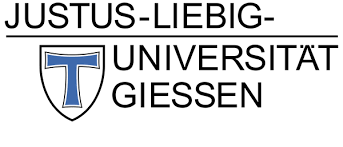KIT Welcomes Money Guillaume Ossohou and Julien Bahino
In July 2024, Money Guillaume Ossohou and Julien Bahino, research scientists from Côte d’Ivoire, embarked on a three-month INSA secondment to the Karlsruher Institute of Technology (KIT) Campus Alpin, in Gamisch-Partenkirschen, Germany. Their aim: master the LandscapeDNDC (LDNDC) model and apply it to African ecosystems.

Developed by KIT in collaboration with the Center for Landscape Research in Sustainable Agricultural Futures (Land-CRAFT) at Aarhus University, Denmark, the LandscapeDNDC model can be used to assess emissions of carbon and nitrogen compounds by simulating biogeochemical processes at local and regional scales. Of particular interest for the INSA project, the model can be used to simulate the nitrogen cycle. Guillaume and Julien will adapt the model to local African conditions, such as tropical forests, savannahs and agricultural lands. The resulting simulations will provide a better understanding of environmental impacts and guide decisions for sustainable land management in Africa.
The LandscapeDNDC model requires several types of input data, including climate data, soil properties, land use information, land management data, as well as socio-economic data. This data provides important contextual information that is crucial for assessing the potential impacts of management practices on emissions of carbon and nitrogen compounds.
Dr Money Guillaume Ossohou is a lecturer at the University of Man (U-Man), and associate researcher at the University Félix Houphouët-Boigny (UFHB), Côte d’Ivoire. Guillaume is involved in the development and implementation of INSA workpackage 2.4, aimed at calculating nitrogen gaseous dry deposition fluxes across the west and central African sites of the International Network to study Deposition and Atmospheric chemistry in AFrica (INDAAF) project. He is Principal Investigator of the INDAAF super site located in Lamto, Côte d’Ivoire and works in close collaboration with Corinne Galy-Lacaux, a CNRS researcher and coordinator of the INDAAF project, on managing and analysing data from INDAAF sites.
Dr Julien Bahino is a lecturer and researcher at UFHB, Côte d’Ivoire, specialized in atmospheric physics and chemistry. His main research interests lie in the measurement of aerosol and gas concentrations including nitrogen (WP2.4 of the INSA project), the calibration of low-cost air quality measurement devices and the determination of emission factors. He has participated in several international research projects including DACCIWA1, INDAAF, PASMU2 and INSA. He is also a member of the CAMS-Net3/AfriqAir4 network.
As part of the INSA project, Julien also had the opportunity to participate in a Les Petit.e.s Débrouillard.e.s d’Occitanie (APDOC) science facilitator training course (see article here). In the weeks following the course Julien participated in a range of APDOC events to further develop his newly-learnt scientific facilitation skills. The objective of including such training in the INSA project is to enable young researchers to better communicate their own scientific research, as well as provide the skills and knowledge to share their passion for science, and nitrogen, with children, university students and the general public.
1DACCIWA (Dynamics-Aerosol-Chemistry-Cloud Interactions in West Africa) was a five-year project, running from 2013 to 2018, funded by the European Union.
2PASMU (Air Pollution and Health in Urban Areas) was a research project aimed at characterising urban air pollution and its impact on health in Cote d’Ivoire. It was funded by the Education and Research Ministry of Cote d’Ivoire as part of the Debt Reduction-Development Contracts (C2Ds) managed by Institut de Recherche pour le Développement (IRD).
3CAMS-Net is the Clean Air Monitoring and Solutions Network a National Science Foundation-funded project aimed at creating an international “network of networks” that will facilitate the exchange of knowledge, ideas, and data.
4 AfriqAir (Africa qualité de l’air) is a new hybrid air quality monitoring network with over 50 low-cost sensors and reference-grade monitors mainly in urban areas across 11 African countries.



















